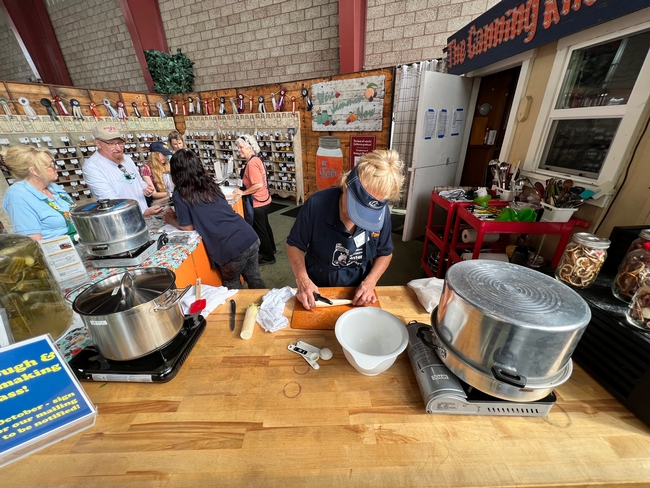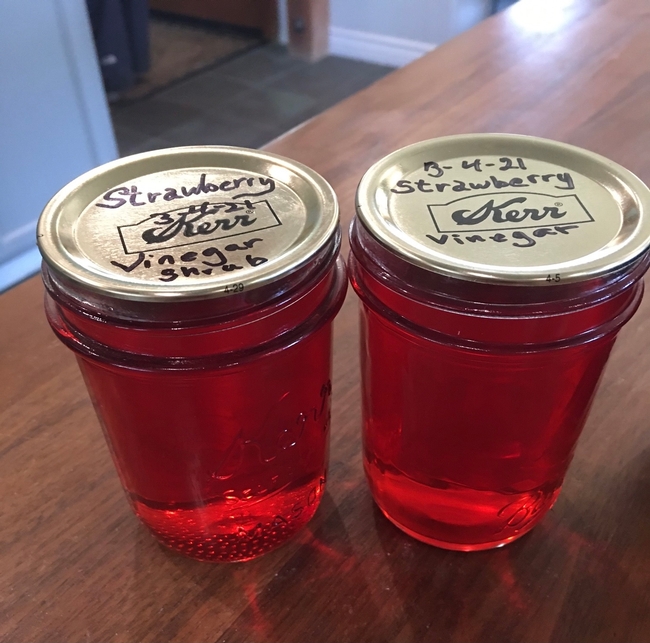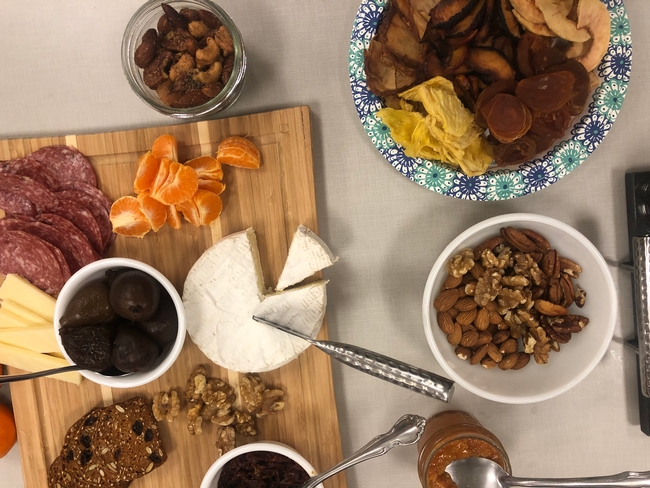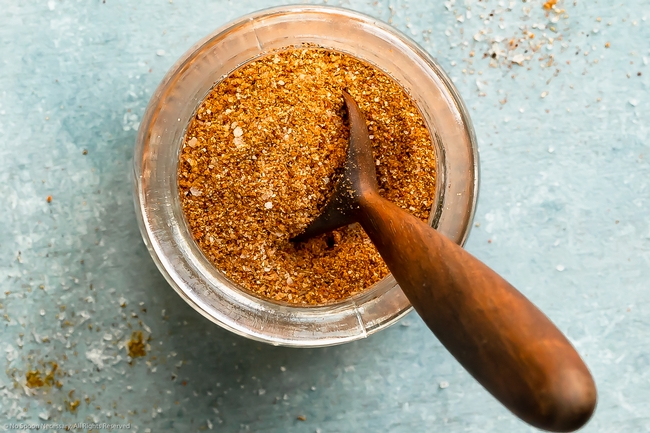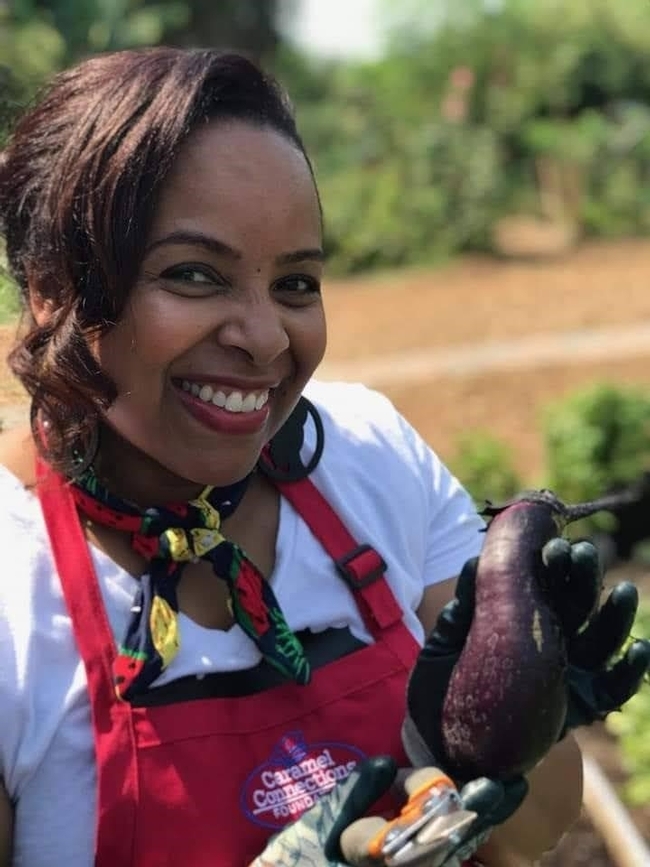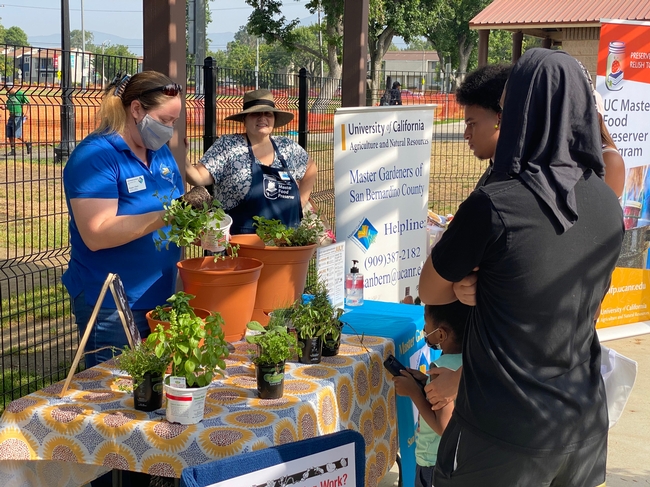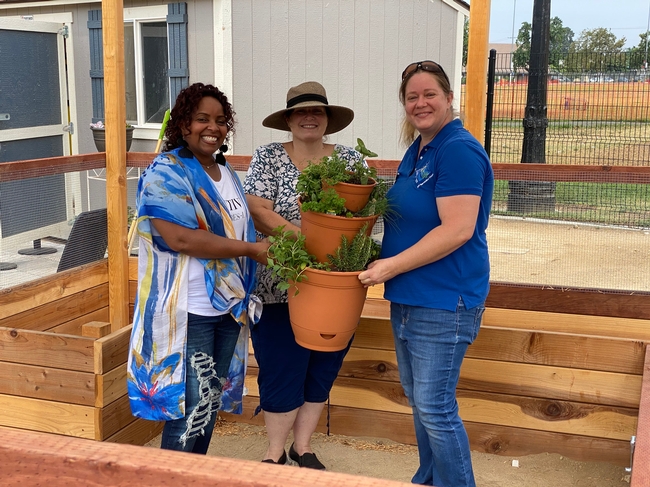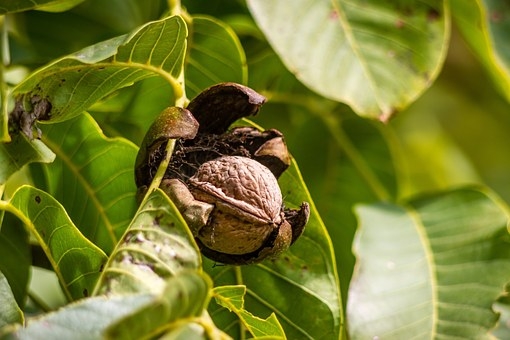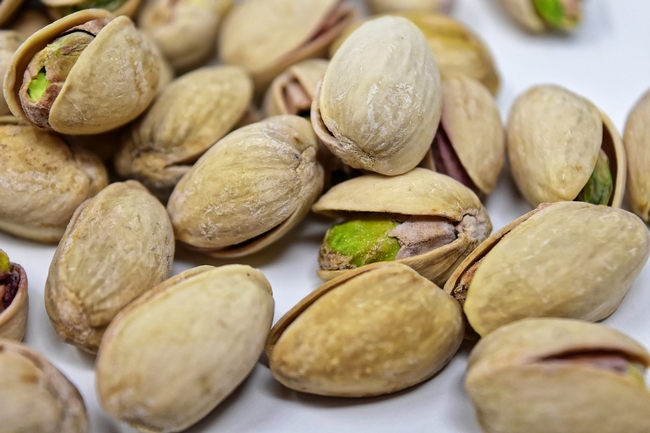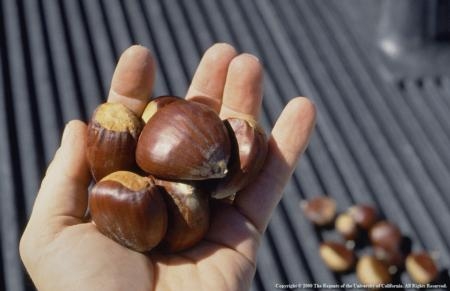
Posts Tagged: Master Food Preservers
More than a TikTok trend, preservation is the future of food
UC Master Food Preservers give live canning demonstrations at Orange County Fair
If you visited the Orange County Fair in Costa Mesa during the past month, you might have seen the Master Food Preservers of Orange County in their rustic farmhouse-themed kitchen located in the OC Promenade exhibit hall.
If the decor did not catch your eye, the colorful rows of glass jars lined along the walls certainly would have. For an entire month, three volunteers conducted live canning demonstrations from 11 a.m. to 8 p.m. five days a week. They are with the UC Master Food Preserver Program, a public service and outreach program under UC Agriculture and Natural Resources.
The OC Fair is UC Master Food Preserver's largest event in Orange County. Last year, the UC Master Food Preservers engaged 7,000 people at their booth.
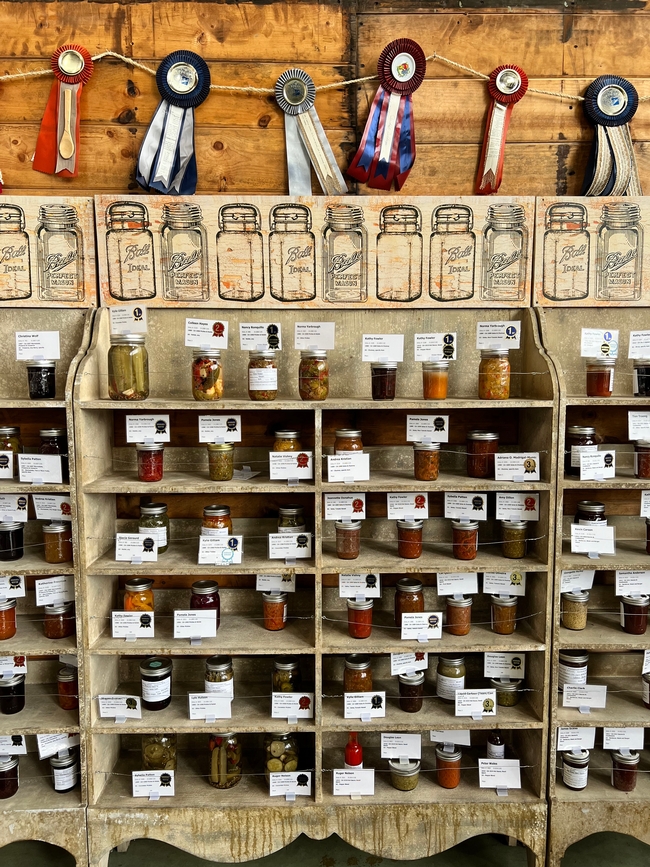
Food preservation has a deep history rooted in human survival. Whether freezing, drying, fermenting or pickling, preservation is a practice that has prolonged the life of food and humans. Other benefits include reducing food waste and increasing food security.
The latest form of preservation, called canning, was introduced in the early 1800s according to a Smithsonian article. By placing food in a glass jar and heating it to a certain temperature for a prescribed period of time, oxygen is removed and a vacuum is created. This process prevents the growth of undesirable bacteria, yeasts and molds, thus keeping the food from spoiling.
This is what you would have found the UC Master Food Preservers demonstrating at the OC Fair.
During her shift, Flo Vallejo, UC Master Food Preserver since 2018, carefully chopped carrots and daikon into thin slices and placed them inside small mason jars with spices inspired by Vietnamese cuisine.
Between the produce donated by Melissa's Produce and the diverse spices donated by Tampico Spice, the possibilities of what you will see the UC Master Food Preservers canning are endless.
“This is something my great-grandmother, grandmother and mother did. I never understood it because they didn't let the little kids in the kitchen,” said first-year UC Master Food Preserver Alice Houseworth.
Many of the UC Master Food Preservers have some experience with canning, whether it be a practice passed down from generation to generation, or, in Houseworth's case, something they watched their elders do as a child.
Some might view canning as a hobby, but according to the UC Master Food Preservers, food preservation is an opportunity to prepare for economic and climatic change. 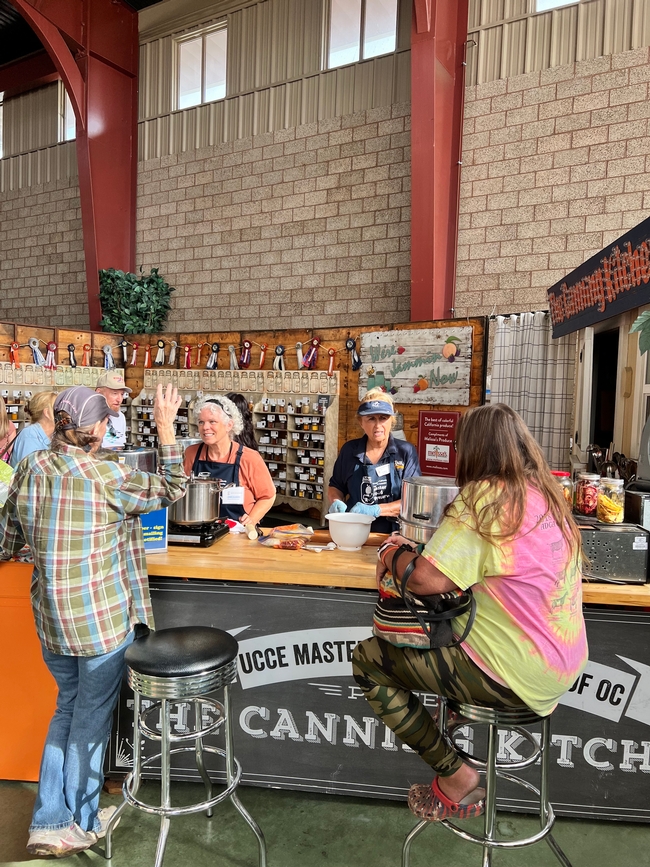
Esa Kiefer, another UC Master Food Preserver since 2018, expressed her concern for the rising prices of food and decline in arable land. “I feel like now is the time to prepare for these changing times,” she said. “Who knows what the future will look like for food?”
Perhaps the future of food will come from glass jars.
“You can even can chicken,” Houseworth said. “When it's cheap at the grocery store, you can buy it and use the pressure canner and then eat it when chicken prices go up.”
Vallejo recalls when pickling and canning were trending on social media during the stay-at-home phase of the COVID-19 pandemic, making it difficult to find mason jars.
“Preservation has been done for a long time. When I saw a lot of people doing it during the pandemic, I thought it was just because people had time on their hands. But I realized that many became concerned about the food supply and accessibility,” she explained.
The resurgence in food preservation interest makes the work of the UC Master Food Preserver program much more essential. Whether you are feeding a large family, living in a food desert or managing a tight budget, food preservation ensures you are fed today, tomorrow and beyond.
To learn more about the Master Food Preserver Program or to locate the nearest program in your area, visit: https://mfp.ucanr.edu/.
UC Master Food Preservers turn food scraps into gifts Dec. 1
Free online class offers recipes for using food scraps, answers questions about food preservation
“Putting food in our bellies instead of landfills is good for the planet,” said Sue Mosbacher, University of California Master Food Preserver Program coordinator. In landfills, decaying food releases methane, a greenhouse gas that contributes to climate change.
“We can reduce food waste and save money by creating new foods from food scraps,” Mosbacher said. “Instead of throwing away a lemon peel after squeezing out the juice, use the lemon zest to make lemon curd or citrus salt. They make wonderful homemade gifts for the holidays.”
UC Cooperative Extension Master Food Preservers, a program of UC Agriculture and Natural Resources, provides ideas for using leftovers and advice for safely preserving food.
On Dec. 1, 6:30 to 7:30 p.m., UCCE Master Food Preserver volunteers of Amador and Calaveras counties will host a free online class to show samples of apple honey, citrus salt, strawberry vinaigrette, sugared walnuts and lemon curd. Recipes will be emailed to participants.
“Many of these gifts are inexpensive to make because you're using food scraps – such as lemon rind or apple peel – and a few other ingredients. You can put the citrus salt in jars you've saved,” Mosbacher said. “It is easy to make and there's no special equipment needed.”
After the “show and tell” session, the UCCE Master Food Preserver volunteers will answer participants' questions about freezing, dehydrating and canning foods and food safety.
Because the class is online, anyone can participate, regardless of their location. Register for the one-hour Zoom workshop at https://mfp.ucanr.edu/Events/?calitem=516566.
The UCCE Master Food Preserver Program extends UC research-based information about home food safety and preservation to the public throughout the year. UCCE Master Food Preserver volunteers are located in 19 counties of California, most recently certifying volunteers in Modoc County, where they are offering pressure canner testing.
UCCE Master Food Preserver volunteers host monthly workshops on the first Wednesday of each month, with hosting duties rotating between Sacramento, El Dorado, Amador and Calaveras counties.
For 2022, the UCCE Master Food Preservers of Sacramento County are planning to offer the following workshops via Zoom:
- Jan. 19 – Citrus for Super Bowl
- Feb. 16 – Dehydration for Soups
- March 16 – Soups & Roots
- April 20 – “Night of Fermenting” Cheese/Yogurt/Sauerkraut
- May 18 – Jams & Jellies
- June 15 – “Ready for BBQ Season” Condiments & Beverages
- July 20 - Red, White & Blue
- Aug. 17 – “Tomato Mania” Salsas, Sauces & Peppers
- Sept. 21 – Sausages & Mustards
- Oct. 19 – “Apples, Pears & Persimmons Oh My”
- Nov. 16 – Sides Dishes for your Holiday Dinner
- Dec. 21 – Quick Gifts
To sign up for any of the workshops above, visit https://sacmfp.ucanr.edu.
To find other upcoming UCCE Master Food Preserver Program events, visit https://mfp.ucanr.edu/Events. To find a program in your county, visit https://mfp.ucanr.edu/Contact/Find_a_Program.
Resources for preserving food and more information about the UCCE Master Food Preserver Program are available at https://mfp.ucanr.edu.
Learn to make gifts in the kitchen with UC Master Food Preservers
Looking for gift ideas that don't cost much? University of California Master Food Preservers, a program of UC Agriculture and Natural Resources, will host online workshops showing how to safely make hot holiday beverages, infused vinegar, spiced nuts, meat rubs, cookie mix in a jar and more. Participants may make their own creations as they watch the demonstrations.
“You can create inexpensive gifts that are made with love for friends and family,” said Wendi Weston, coordinator of the UC Master Food Preservers of Sacramento County.
Gifts from the Kitchen Virtual Workshop will be held 6:30 to 8:30 p.m. Wednesday, Nov. 17. This workshop is hosted by the UC Master Food Preservers of Sacramento County, but they welcome participants from outside the county as well. Register at https://mfp.ucanr.edu/Events/?calitem=499948&g=72758.
“Participants will learn to make flavored tea and the barbecue spice rub during the workshop. It'll be fun and festive,” said Weston, who is planning the series of workshops.
During the two-hour Zoom workshop, the UC Master Food Preserver volunteers will demonstrate how to make cranberry conserve, spiced nuts, infused vinegar and holiday cookies in a jar. They will also share decorating and food safety tips.
After the workshop, the recipe books can be purchased for $10 at https://sacmfp.ucanr.edu. Recipes from past workshops can be downloaded for free at https://sacmfp.ucanr.edu/Monthly_Demonstrations/Recipes.
On Dec. 1, UC Master Food Preserver volunteers of Amador and Calaveras counties will discuss freezing, dehydrating, canning and food safety during an online workshop. Register at https://mfp.ucanr.edu/Events/?calitem=516566.
“We can reduce food waste and save money by preserving food,” said Sue Mosbacher, UC Master Food Preserver Program coordinator.
The UC Master Food Preserver Program extends UC research-based information about home food safety and preservation to the public throughout the year. They are located in 19 counties of California, most recently adding UC Master Food Preserver volunteers in Modoc County, where they are offering pressure canner testing.
For 2022, the UC Master Food Preservers of Sacramento County are planning to offer the following workshops via Zoom:
- Jan 19 – Citrus for Super Bowl
- Feb 16 – Dehydration for Soups
- March 16 – Soups & Roots
- April 20 – “Night of Fermenting” Cheese/Yogurt/Sauerkraut
- May 18 – Jams & Jellies
- June 15 – “Ready for BBQ Season” Condiments & Beverages
- July 20 - Red, White & Blue
- Aug 17 – “Tomato Mania” Salsas, Sauces & Peppers
- Sep 21 – Sausages & Mustards
- Oct 19 – “Apples, Pears & Persimmons Oh My”
- Nov 16 – Sides Dishes for your Holiday Dinner
- Dec 21 – Quick Gifts
To sign up for any of the workshops above, visit https://sacmfp.ucanr.edu.
To find other upcoming UC Master Food Preserver Program events, visit https://mfp.ucanr.edu/Events.
For resources for preserving food and more information about the UC Master Food Preserver Program, visit https://mfp.ucanr.edu.
UC ANR, local nonprofit grow community health in Inland Empire garden
A volunteer recovering from a drug addiction gives time regularly to help stay sober. An older person uses outdoor spaces to stay active, physically and socially, despite mobility issues. And a mother of four strives to teach her children what carrots look like before they become capsules in plastic bags.
While these San Bernardino County residents enjoy their hours within their community garden, the lessons and inspiration they derive travel much farther – forming the branches and roots of a stronger, healthier community.
Hence the name of this unique place in Ontario, the Seeds of Joy Community Garden.
“The goal is to not just grow in the garden, but to grow the community outside the gates as well,” said UC Master Gardener Elizabeth McSwain, whose nonprofit, Caramel Connections Foundation, has nurtured this project from its beginnings in 2018 as a small plot within the Huerta del Valle Garden.
The programs and classes were so well-received that McSwain and her partners and volunteers opened in April 2021 a much larger, 1-acre space within Anthony Muñoz Hall of Fame Park.
As a self-described “green heart with a brown thumb,” McSwain said the success of the garden would not be possible without the support of UC Agriculture and Natural Resources (ANR) staff and volunteers.
McSwain, a restaurant owner, founded Caramel Connections Foundation in 2016 to offer culinary and healthy eating classes at the local Boys & Girls Club. During her first-ever visit to a community garden to attend a “herbs as medicine” class taught by UC Master Gardener Valerie Dobesh, McSwain had a life-changing conversation at an information table.
Maggie O'Neill, the UC Master Gardener program coordinator for UCCE in San Bernardino County, patiently answered McSwain's many questions about the program, which trains volunteers to spread research-based knowledge on home horticulture, pest management and sustainable landscape practices.
“In regards to planting the seed in my heart, I can never say enough about Maggie,” McSwain said, “because Maggie's passion and her knowledge about gardening made me feel like…even though I didn't have the skill set, she made me feel as if I would be a good candidate for the Master Gardener program.”
McSwain graduated from the program in March 2021, equipped with the expertise to better support the volunteers and participants in an ever-blossoming variety of programs that serve a broad swath of the community.
“One of the key founding principles of this garden from the very beginning has been inclusivity and making sure that all community members feel welcome, celebrating many cultures, ethnicities and religions,” O'Neill said. “Elizabeth has made sure that the partners and organizations that are supporting this garden are equally diverse and inclusive so that the community members are able to see themselves represented in the people who are helping to bring this garden together.”
Seeds of Joy now features a Zen garden with succulents to raise drought awareness, a Read in Color Little Free Library emphasizing diverse cultural connections, a composting/vermicomposting bin system to highlight waste diversion (with a small orchard), a story time area for children, an outdoor classroom, a space for yoga classes, and an outdoor community kitchen that helps produce meals for facilities serving individuals and families experiencing homelessness.
“With food insecurity being such a major problem for San Bernardino County in general, even prior to COVID, the current epidemic of poor nutrition in our children is weakening the strength of our community,” McSwain explained. “We hope to play a part in helping to fix that in some way – healthy food and fitness are powerful essentials that are often overlooked.”
Residents of low-income housing units across the street will have priority for reserving plots in the heart of the garden – approximately 30 raised beds for growing fresh, organic produce. Although completion of those beds has been delayed due to COVID impacts, applications have already been coming in.
“Ultimately our goal is to teach Inland Empire families what's involved in maintaining an edible garden,” McSwain said. “We provide them with the basic tools.”
In addition to UC Master Gardener-led classes, other UC ANR programs are contributing to this educational hub within a historically underserved neighborhood. The Master Food Preserver Program volunteers will be offering workshops on how to safely preserve the community garden's harvests, while EFNEP (Expanded Food and Nutrition Program) educators will teach about eating nutritious, delicious food in a budget-conscious way.
“Our programs are a great complement to the garden and to each other because we teach people how to grow their own food, then teach them how to preserve it and how to make lifestyles changes for healthier, happier families,” O'Neill said. “With all of these classes offered free to the community through the UCCE, we are able to add incredible value to an already great project.”
Already, O'Neill has been showing community members how to “companion plant” – maximizing the limited space residents have to work with, by placing ecologically compatible plants next to each other so that they can mutually flourish.
Companion gardening is a fitting analogy for the power of collaboration – with local officials, community and corporate partners, and organizations such as UC ANR – in growing spaces and resources for the benefit of the entire community.
“Partnering with the Master Gardener program and the Master Food Preserver Program and EFNEP is the perfect partnership in that we're all trying to do the same thing,” McSwain said. “We're trying to help people make better choices and to give them the tools so that they can live better lives, and not necessarily have to rely on spending $500 at the grocery store to get organic products, and making a choice between paying your light bills or buying food.”
McSwain welcomes all community members to participate, engage, and visit the Seeds of Joy garden, located at 1240 W. Fourth St. in Ontario.
“I don't want it to be a secret garden,” she said. “We want the community to know that it's there for them, that it's there to enhance their life – to reduce the disparities in our community and to be able to just spark a love of gardening and bring joy.”
In addition to support from UC ANR programs, Seeds of Joy is made possible by the City of Ontario (Mayor Paul Leon, City Council, and former City Manager Al Boling), American Beverage Association, Beola's Southern Cuisine, CalRecycle, Huerta del Valle Garden, Inland Empire Health Plan (IEHP), Inland Empire Resource Conservation District, Kellogg Garden Products, Mercy House, San Bernardino County, SLJ Pro Audio Services – among a host of other community partners.
Storing and preserving fresh nuts
One of the many wonderful things about California's climate is that in many regions of the state you'll find orchards of walnut, almond, pecan, pistachio or chestnut trees. You may be growing or planning to grow one or more of these trees in your yard so you can enjoy consuming the nuts. But do you know how to safely store, and preserve these fresh nuts?
There are just a few simple steps to follow. First, be sure to promptly remove the hull (the fibrous outer covering) that may still be remaining on some of the nuts. (If you have hulled walnuts before you will know they'll stain your hands brown, so you should wear gloves to hull walnuts.)
During this time of COVID-19, you may be tempted to wash your fresh nuts, but don't. Washing the nuts in their shell could increase their moisture and provide the environment for mold or bacteria to grow. Although not required to safely store the nuts, to decrease the likelihood of walnuts, almonds, pecans and pistachios developing mold, you may want to dry them. For walnuts and almonds, spread them out preferably single layer on a flat screen or tray that allows good air circulation. To prevent birds and other critters from making off with them while they are drying, cover them with another screen or plastic netting. Stir and move the nuts around daily.
It will take several days for them to dry. To determine when they are sufficiently dry, remove the shell from several nuts. Break apart the almond kernels, or walnut meat. If they are rubbery, they're not dried sufficiently. If they are crisp or brittle when broken, then they are dried adequately.
For pecans, they should be dried slowly in air temperatures 75–85 degrees Fahrenheit to prevent the shells from cracking. A fan blowing on the nuts will speed up the drying process, which can take up to 10 days. The pecans are dry when they're brittle and the membrane between the kernel halves separate easily from the kernels.
Pistachios can be dried in the sun on a plastic tarp, or they can be dried in the oven at 140–160 degrees Fahrenheit for 10–14 hours. They are dried when the kernels are crisp, but not brittle.
Before consuming or storing at room temperature, fresh home-grown walnuts, almonds, pecans, pistachios or chestnuts, or those bought at farm stands, pasteurize them to kill any insects or insect eggs. To pasteurize, simply place them in the freezer for 48 hours. (Make sure your freezer is set at 0 degrees Fahrenheit or lower.)
To store your walnuts, almond, pecans or pistachios, place them in clean moisture free, odor tight packaging, such as glass or plastic jars or other containers. The nuts can be stored shelled or unshelled. They can be stored up to a year in your refrigerator set at 40 degrees Fahrenheit or lower. Almonds can be stored in your freezer (set at 0 degrees Fahrenheit or lower) for a year or more, walnuts and pecans for two years plus, and pistachios for three years.
Chestnuts are different from the other nuts because they're more like potatoes than tree nuts. They usually develop mold within two weeks if stored at room temperature. Unshelled chestnuts can only be stored for two to three months in the refrigerator, but shelled chestnuts can be stored for a year in the refrigerator. Both shelled and unshelled chestnuts can be stored in the freezer for one year or more.
Enjoy your stored nuts throughout the year!
For more information about the UC Master Food Preserver Program, including the Food Preservation Video Library, visit mfp.ucanr.edu.

